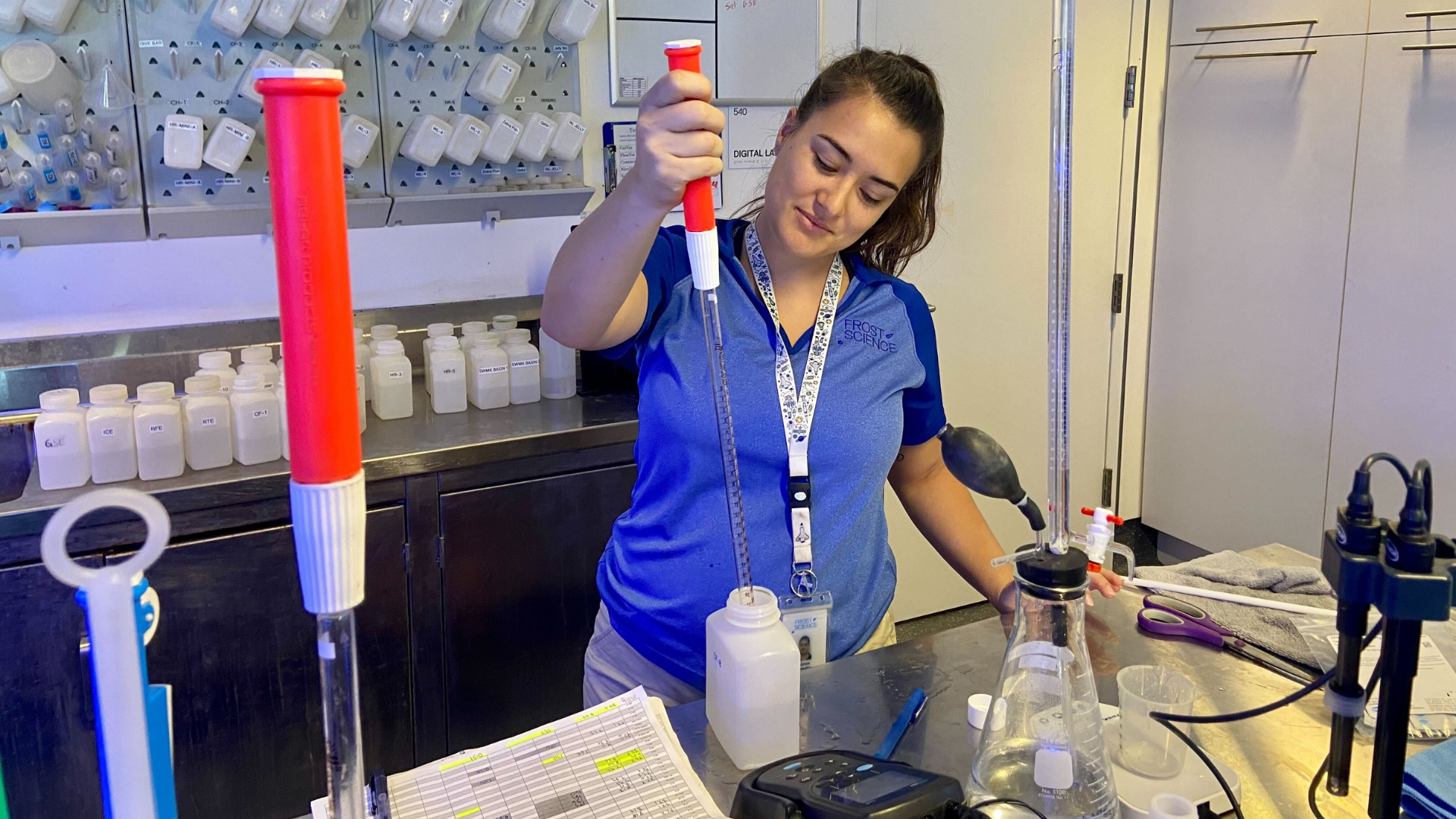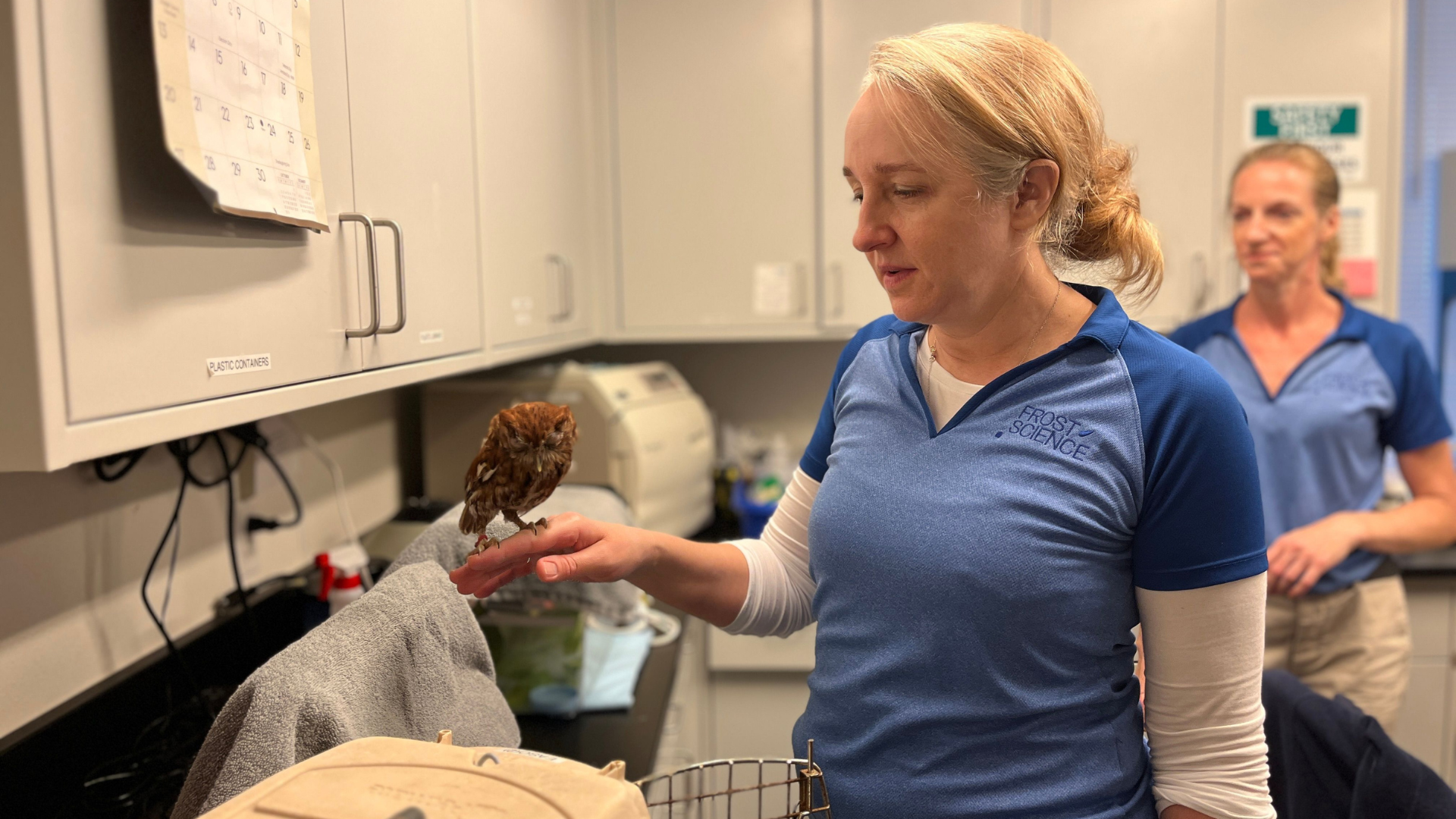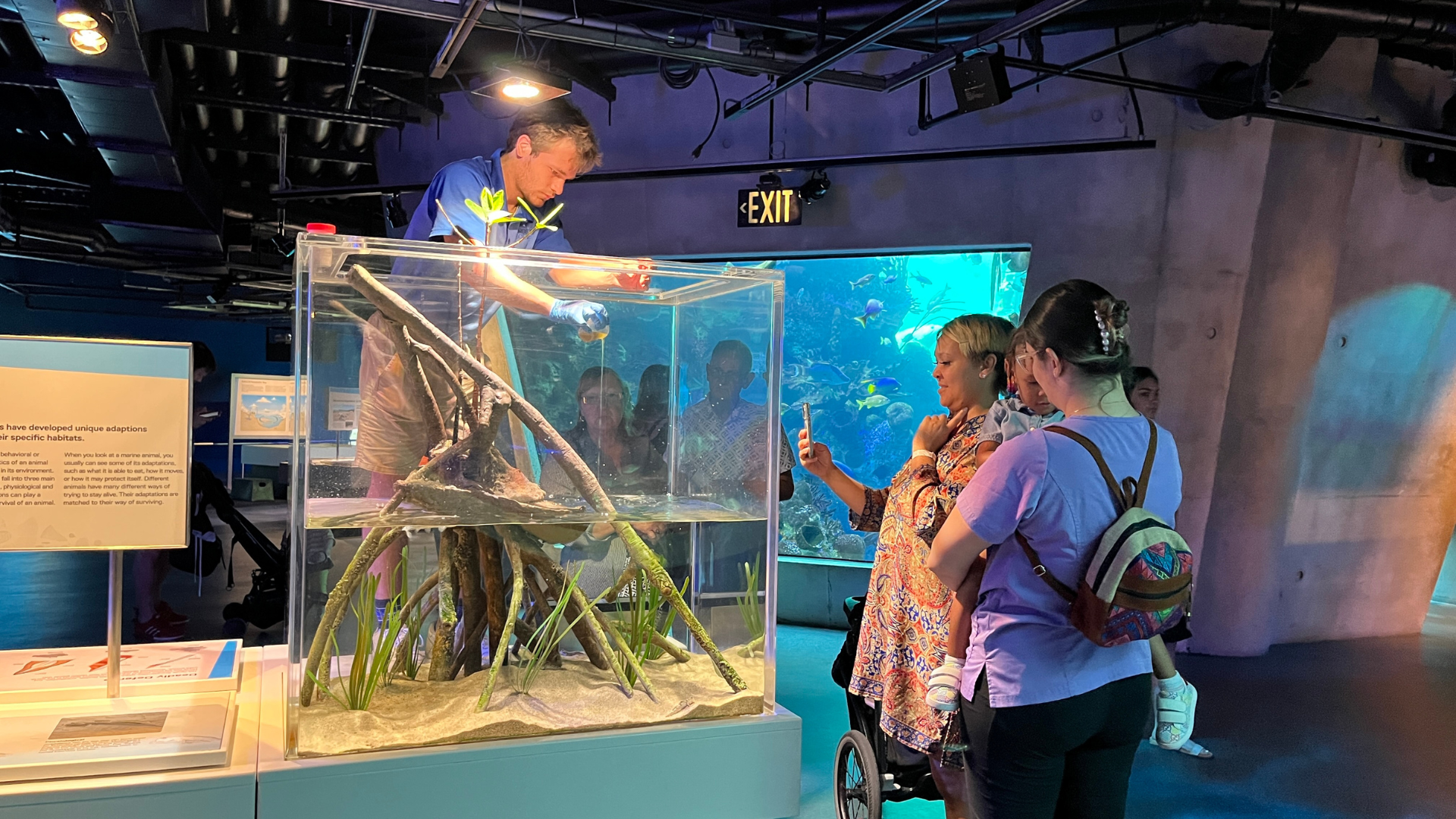
Samantha Thomas, a master’s student at the University of Miami, has joined Frost Science this summer as our Conservation and Animal Husbandry Intern. Come behind the scenes with her to experience her work!
Frost Science’s animal husbandry, conservation and veterinary teams – the people responsible for our animals, their habitats, and the museum’s conservation efforts – contains 35 team members, each with their own specialized role. Some oversee the building’s life support systems, keeping a vigilant eye on the water quality and the filtration systems. Others care for the animals, ensuring that each individual is healthy. For this team, each day brings new tasks and challenges. Come behind the scenes with us to experience our work.
Our day starts at 6:30 a.m. with a daily meeting. We review who is responsible for feeding the sharks, rays, schooling fishes and sea turtle in the Gulf Stream exhibit, as these feeds happen multiple times a day and are a shared task. We also discuss the dive plan and/or maintenance for each of the habitats as well as the other chores that need to be completed.

After the meeting, we each head to our individual assignments to get the habitats ready for the day. Each is cleaned, no matter how big or small. Among myriad other tasks, the windows are scrubbed, some exhibits are pressure washed, the animals are evaluated and fed, and every part of the overall system is tested to make sure it is running well. Most everything on the main museum floor must be finished by 10:00 a.m., when the gates open and the public arrives.
As the day continues, we disperse throughout the museum to continue our jobs. The living exhibitions team includes life support system (LSS) specialists, aquarists, a herpetologist, an aviculturist, divers, and volunteers. The LSS specialists work largely behind the scenes to produce clean water for the exhibits and monitor the complex inner workings of the valves, pipes and filtration systems within the museum’s walls. At high tide, we bring in additional water directly from Biscayne Bay; this water must be treated and tested before it is pumped into the exhibits to ensure it is safe for the animals. You may occasionally see the LSS team pulling water samples from exhibits, monitoring water depth or checking valve closings with an iPad.
The aquarists monitor and feed the animals in each individual exhibit, including in The Dive gallery where there are many smaller displays. They also feed the cownose rays by hand. They rarely feed the animals by hand, the cownose rays are one of those exceptions. As the hungry rays suck up their food, each gets a wellness check. If you are at Frost Science around lunchtime each day, you may even get a chance to observe that feeding on The Vista. This is a great chance to ask the aquarists all your questions about our marine life—each person on the team is an expert in the animals they care for.

Like the aquarists do for the fishes, the herpetologist and aviculturist care for the reptiles and birds on The Vista. In addition to cleaning and feeding, they offer the crocodile, alligators, tortoises, owls, and other animals enrichment activities to engage them behaviorally. The museum’s birds are primarily non-releasable animals, with various non-resolvable issues requiring consistent monitoring and regular medical follow-ups. The husbandry and veterinary care teams are vigilant, conducting both routine and special check-ups.
Rounding out the team are our exhibit diving technicians. These highly trained and specialized divers most often perform underwater habitat maintenance. They are all SCUBA certified and oversee the equipment, including filling the 18 cylinders of air team goes through each week in their 22 hours underwater. Finally, the team also includes volunteers each week who partner with staff to tackle animal care tasks. This can include preparing food (an often smelly job!), helping feed the animals, and assisting in maintaining top-notch exhibit accuracy. The volunteers are a vital part of the Frost Science team. To learn more about volunteer opportunities, click here.

The team’s day ends at 3:30 p.m., giving us time to go home and relax before another early morning. Between feeding the animals, cleaning the current systems and fabricating new ones, counting coral colonies, and doing all the other daily chores that keep the aquariums safe for all, we also collaborate on projects with other divisions at the museum.
My internship also entails working with the museum’s conservation team to share our marine protection efforts with the public. While I have only been interning here for a few weeks, it is already clear to me that Frost Science is a community that strives to educate the public about marine life and science in general, and everyone on the team genuinely cares about each animal. Getting up early is worth it when the job is this fun!